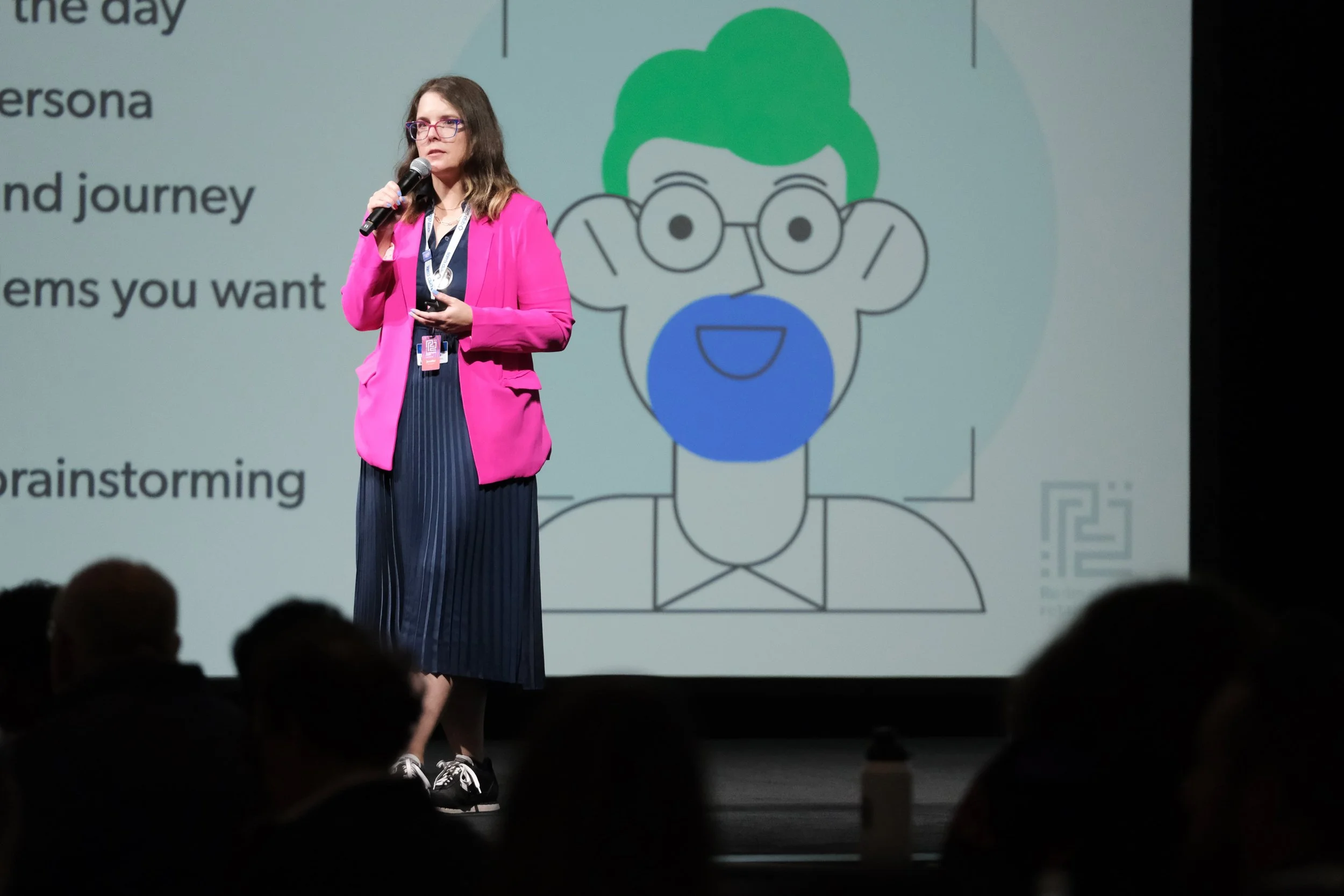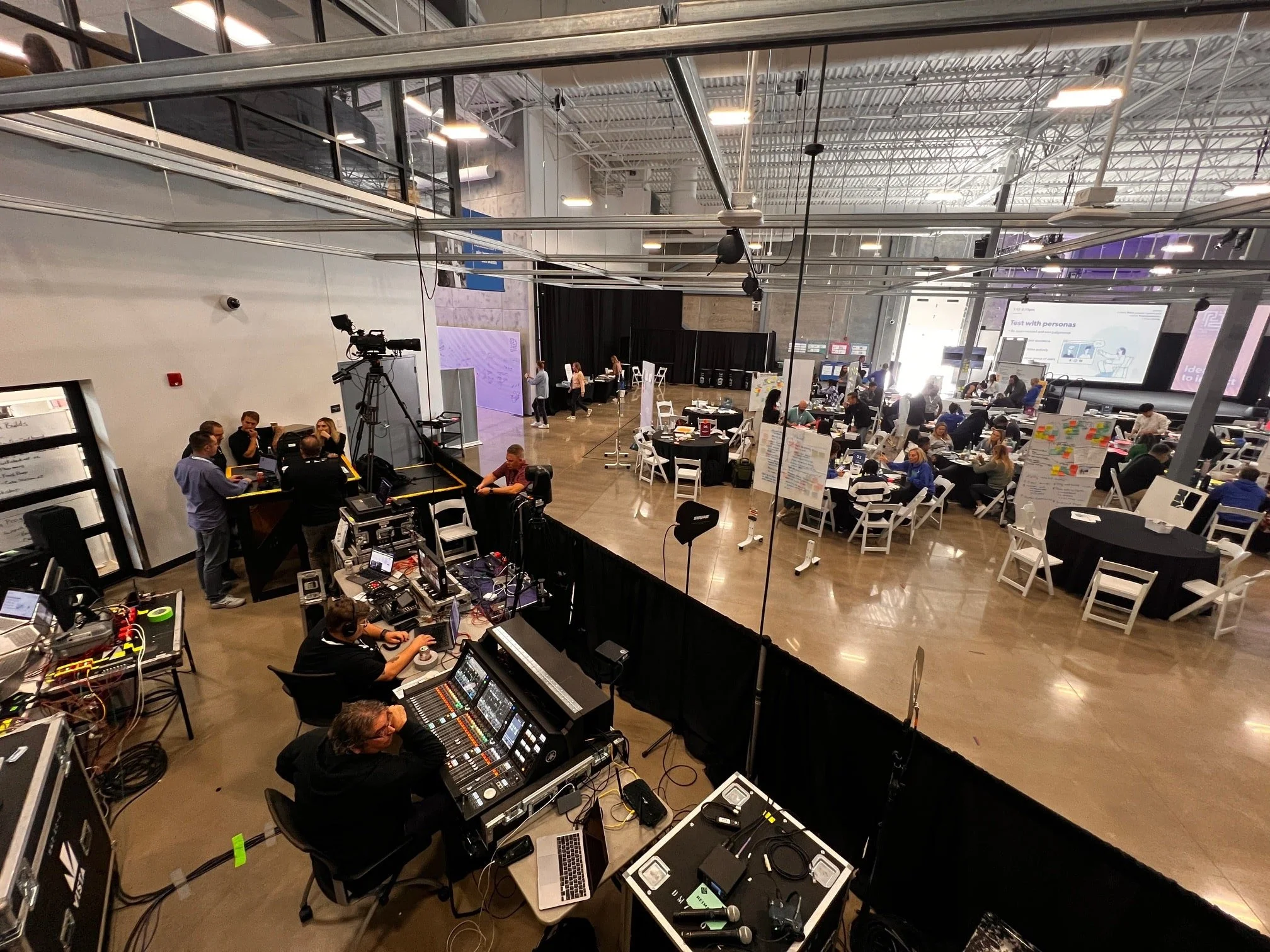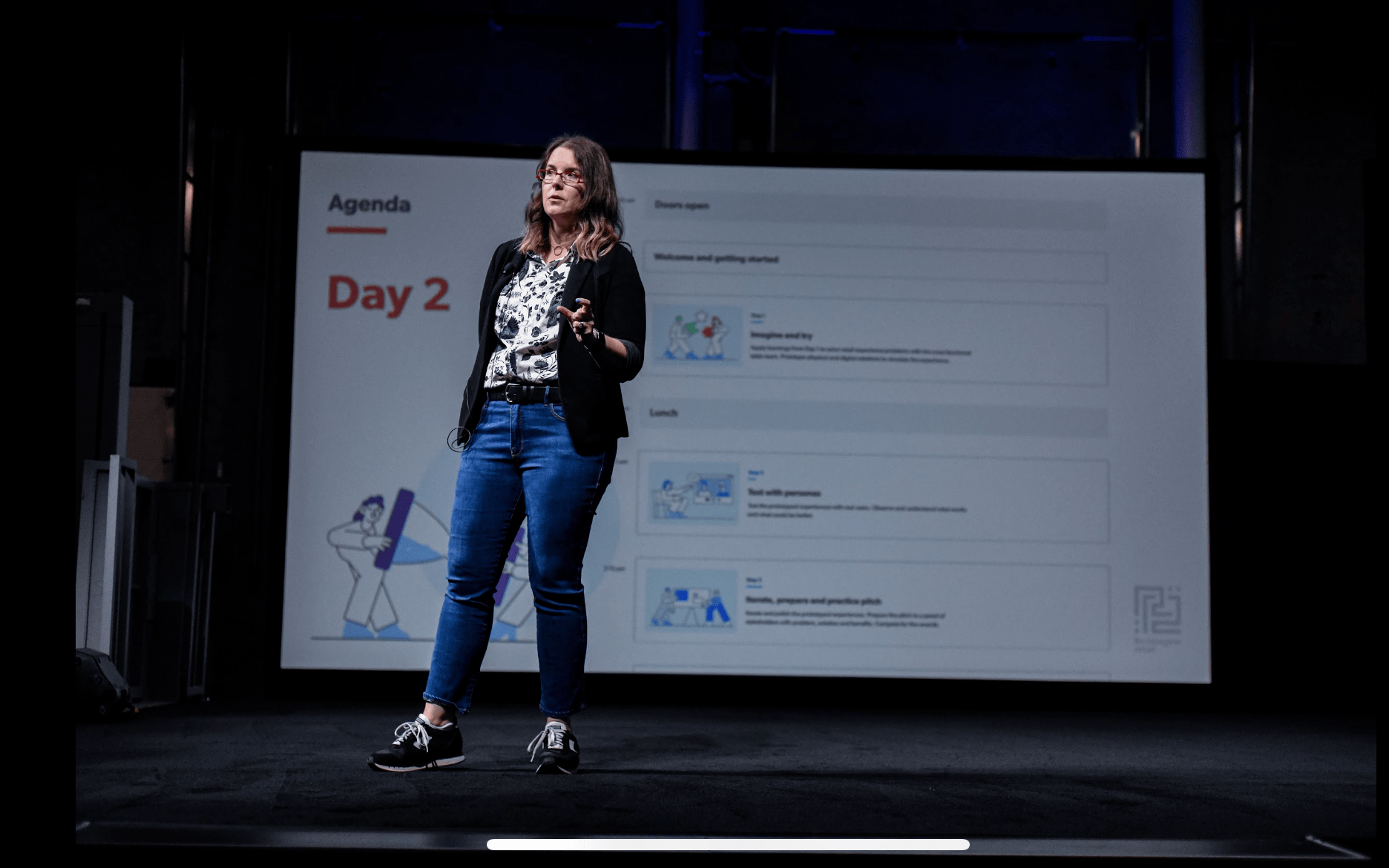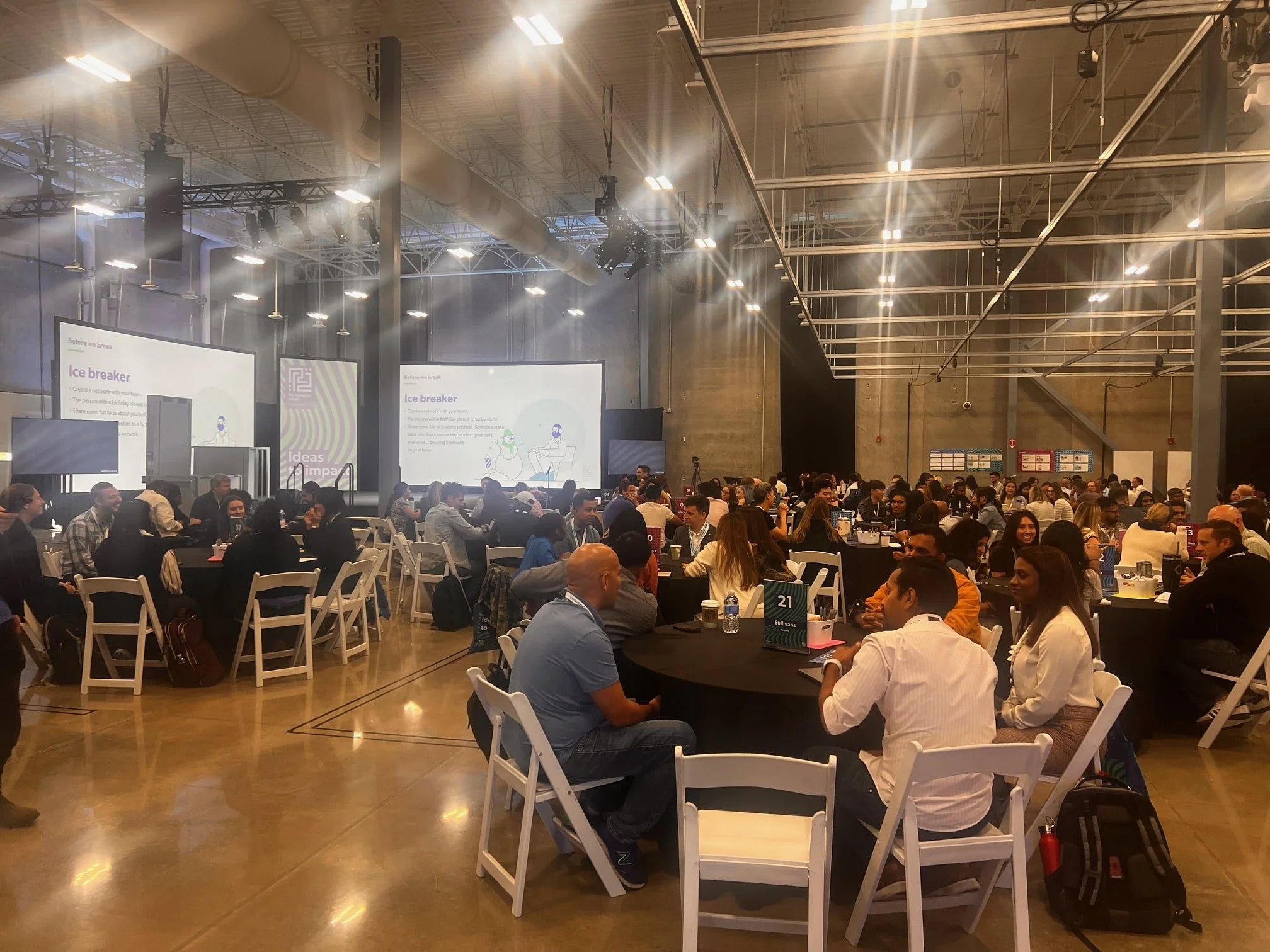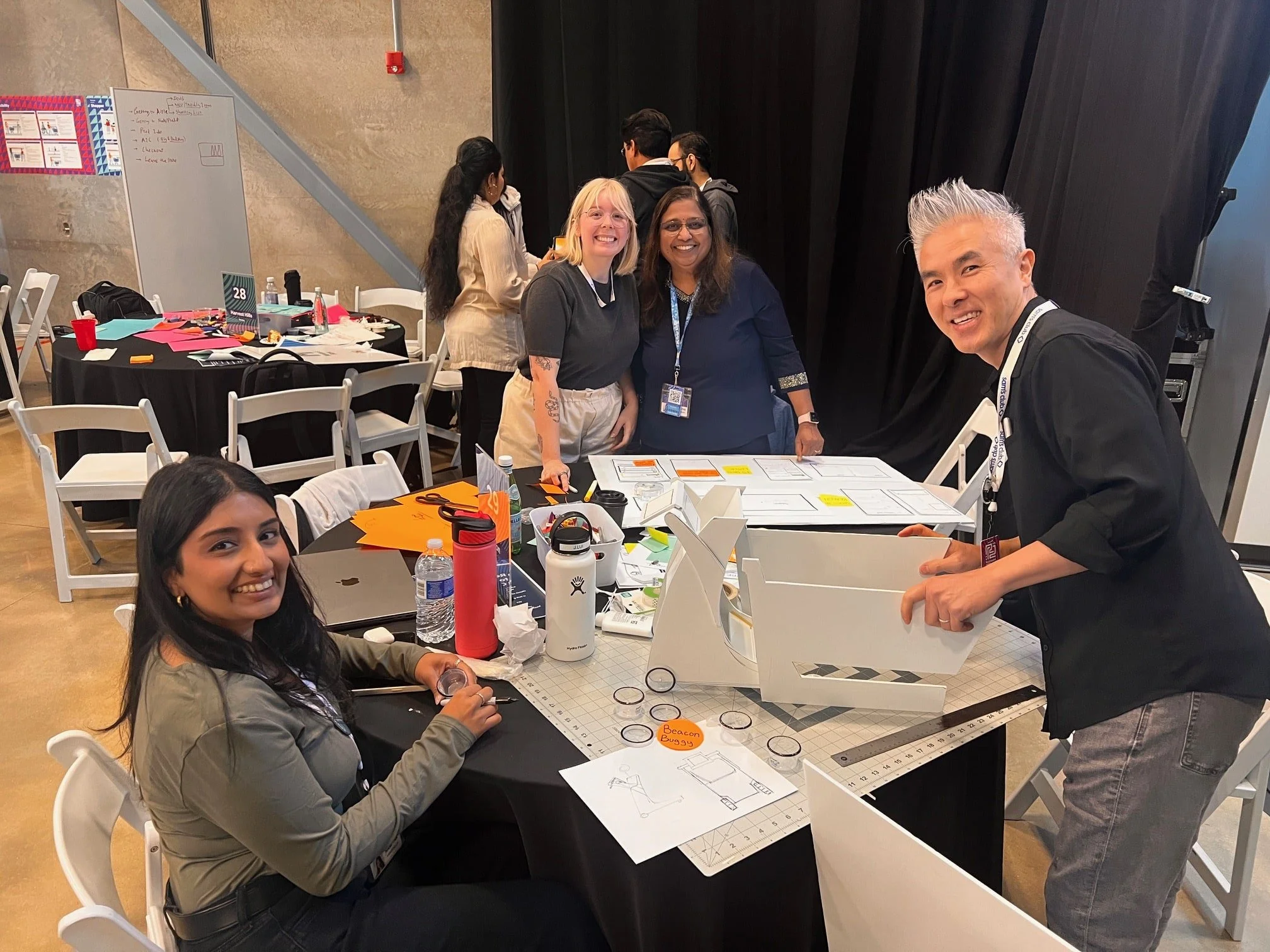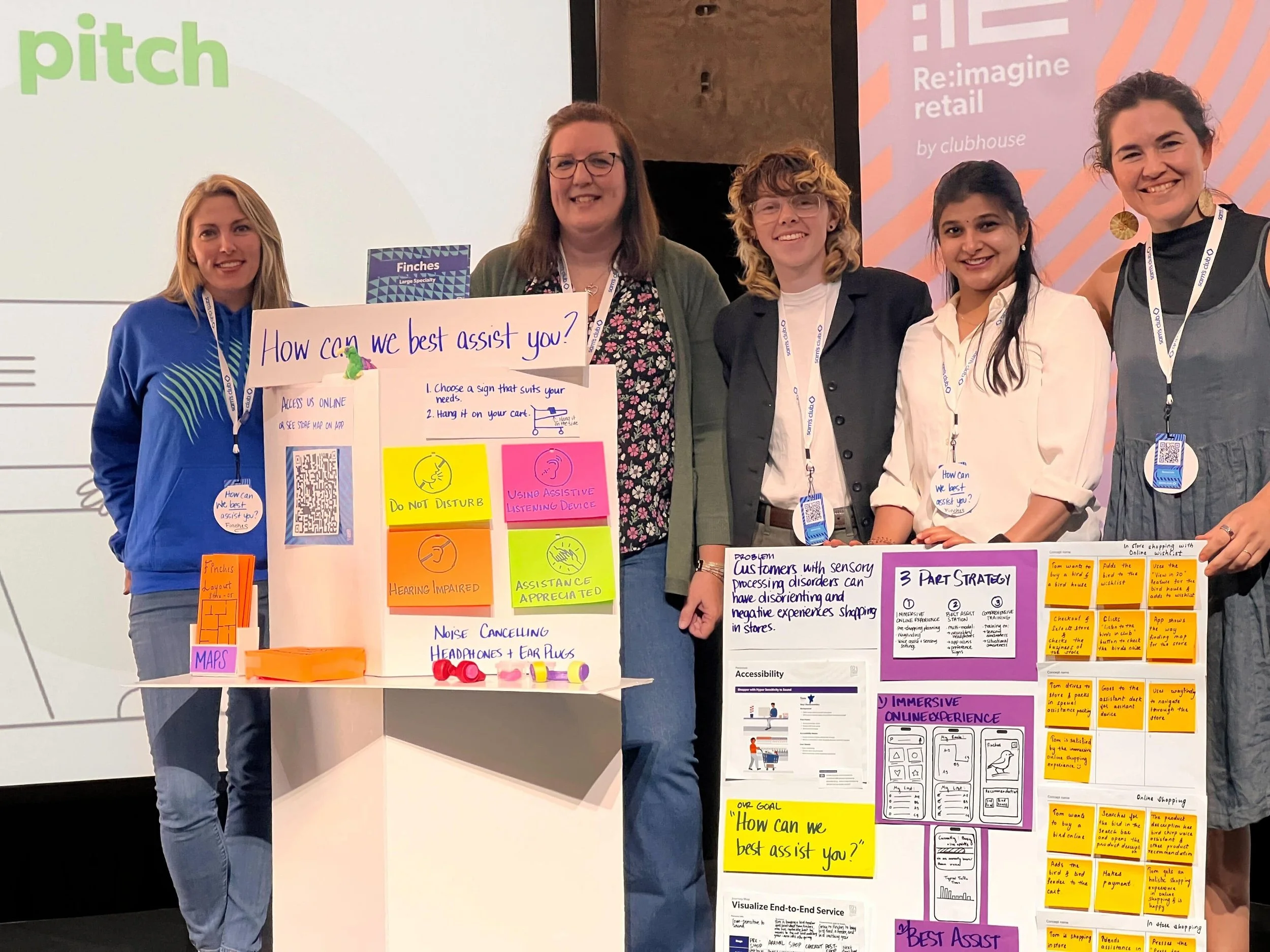
Retail / Events
A two-day conference and design sprint that energized 330+ associates to imagine the future of retail
Client: Sam’s Club
Role: Studio Director, Event Emcee
Team: VP of UX Design and Research, Senior Director Design Research, Senior Director UX Design, Senior Manager UX Design, Content Strategist, Senior UX Designer, Staff Researcher & Lead of Inclusive Experiences
Company: Walmart
The second annual Re:imagine Retail conference marked a defining moment for Sam’s Club’s Experience Team—and the first major event hosted at the new 37,000-sq-ft Clubhouse design studio. What began as an intimate gathering of 80 in its first year evolved into a two-day, cross-functional event of 330+ participants from Sam’s Club, Walmart, partner organizations, and university programs.
The goal: inspire and equip associates to turn bold ideas into impact, using design thinking to shape the future of retail.
The Sam’s Club Experience Team set out to create a two-day design conference and sprint that was both creatively energizing and logistically seamless—the first large-scale event at the newly opened Clubhouse innovation studio.
Our goal was to design a cohesive sprint experience—complete with personas, problem statements, and empathy tools—that empowered hundreds of cross-functional associates (UX, tech, ops, marketing, product) to collaborate, prototype, and present real retail solutions in a single day.
The Challenge
As part of the core planning team of nine, I co-led operations, logistics, and event strategy, ensuring the Clubhouse experience ran smoothly end-to-end. I helped shape the sprint challenge and served as Emcee and facilitator throughout both days—bringing energy, clarity, and approachability to every session.
Key contributions included:
Sprint design: Co-authored the structure and flow of the Learn → Imagine → Try → Test framework. Introduced empathy mapping and journey mapping tools to help teams understand user needs and accessibility challenges.
Operational leadership: Managed on-site logistics and vendor coordination, aligned to budget.
The Approach
Facilitation: Led 330+ people across 30 teams through every phase of the sprint—coaching, challenging assumptions, and modeling human-centered problem solving in real time.
Engagement: Created a sense of momentum and belonging as Emcee, guiding participants, maintaining excitement through rapid presentations and awards.
Space activation: Leveraged Clubhouse’s zones and design principles to foster exploration—digital signage, interactive experiences, and an event microsite that guided teams through the process.
Ideas to Impact
Clubhouse Team
Welcome with VP of Design
Walking Through Expectations
Selfie for My Dad!
Event Logistics
Design Thinking Exercises
Sprint Day 2 Kickoff
Audience Icebreaker
Prototyping Phase of Sprint
Congrats Final Sprint Winners!
Outcomes
330+ attendees (up from 80 the prior year) representing every major business unit.
30 prototypes presented to a panel of retail experts across five award categories.
100% cross-functional teams blending UX, tech, ops, marketing, and product associates.
Strong internal feedback that the sprint was “thoughtful, challenging, and impactful”—with positive growth from year one.
Sparked ongoing integration of learn-from-others facilitation methods into future Clubhouse training programs.


